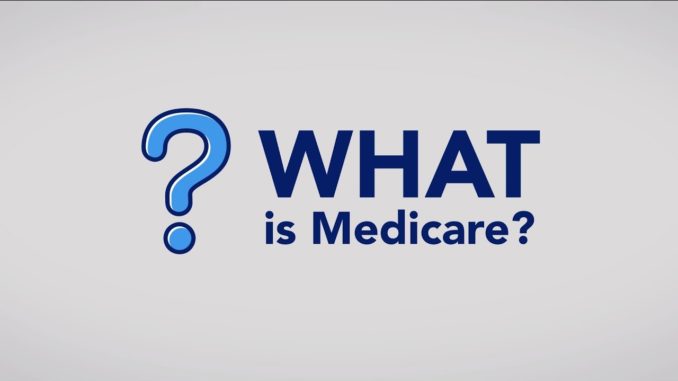
Medicare is a government-run health insurance program that provides coverage for people who are 65 or older, certain younger people with disabilities, and people with End-Stage Renal Disease (permanent kidney failure requiring dialysis or a transplant, sometimes called ESRD). Medicare has four parts: Part A, which covers inpatient hospital care; Part B, which covers medically necessary services like doctor visits, outpatient care, and some preventive services; Part C, which allows people to receive their Medicare benefits through private insurance plans instead of Original Medicare; and Part D, which covers prescription drugs. We will provide a basic introduction to Medicare for those new to the program.
Eligibility Requirements for Medicare
In order to be eligible for Medicare, one must be a citizen in the United States or a permanent legal resident of at least five years, and you must be 65 years or older or under 65 years old with a qualifying disability. A person with End-Stage Renal Disease is also eligible for Medicare coverage.
Medicare Cover
Hospitalization, skilled nursing facility care, hospice care, and home health care are all covered by Medicare Part A, including inpatient hospital care. Additionally, Medicare Part B covers medically required services such as doctor visits, outpatient treatment, durable medical equipment, and some of the pre-specified services. It is possible for people to get their Medicare benefits through commercial insurance plans rather than through Original Medicare, known as Medicare Advantage, which is covered by Medicare Part C. Prescription medications are covered by Medicare Part D.
Cost of Medicare
The cost of Medicare in the United States varies depending on the type of coverage you choose. For example, Medicare Part A, which covers hospitalization, has a monthly premium of $499. The standard Part B premium is $170.10 and can be slightly higher depending on an individual’s income. Medicare Part C and Part D have a monthly premium that varies depending on the plan.
In addition to the monthly premiums, deductibles and copayments are also associated with Medicare coverage. For example, the deductible for Medicare Part A is $1,316 for each benefit period. The deductible for Medicare Part B is $183 for each calendar year. And the copayment for Medicare Part D is $3.60 for generic drugs and $8.50 for brand-name drugs.
Overall, the cost of Medicare in the US can be quite expensive. However, there are many ways to save money on Medicare coverage, such as using a Medicare Advantage plan or a Medicare Supplement plan. There are also many ways to help pay for Medicare, such as through Medicaid or the Social Security Administration.
Signing Up for Medicare
If you are already receiving benefits from Social Security or the Railroad Retirement Board, you will be automatically enrolled in Medicare Part A and Part B. You will receive your Medicare card in the mail three months before 65.
If you are not receiving benefits from Social Security or the Railroad Retirement Board, you can sign up for Medicare online at www.Medicare.gov or by calling 1-800-MEDICARE (1-800-633-4227). A person can also sign up for Medicare at their local Social Security office or Railroad Retirement Board office.
You can also sign up for Medicare during the General Enrollment Period, which runs from January 1 to March 31 each year. If you sign up during the General Enrollment Period, your coverage will begin on July 1 of that year. There are also special enrollment periods for people covered by group health insurance from an employer or union, people who have End-Stage Renal Disease, and people eligible for Medicare but did not sign up when they were first eligible.
Differences between Original Medicare and Medicare Advantage
Original Medicare is the government-run health insurance program that provides hospital and medical care coverage. Medicare Advantage is a program that allows people to receive their Medicare benefits through private insurance plans instead of Original Medicare.
Original Medicare is run by the federal government and provides hospital insurance (Part A) and medical insurance (Part B). Medicare Advantage plans are run by private insurance companies and must provide at least the same coverage as Original Medicare (Parts A and B). Some Medicare Advantage plans also include Part D prescription drug coverage.
If you have Original Medicare, you can see any doctor or provider that accepts Medicare, although you may pay more if they don’t participate in the Medicare program. With a Medicare Advantage plan, you’re usually required to use doctors and other providers in the plan’s network, but some plans offer out-of-network coverage.
Another difference is that Original Medicare doesn’t cover everything. You’re responsible for paying deductibles, coinsurance, and copayments. Some services, like dental and vision care, are not covered at all. Medicare Advantage plans typically have lower out-of-pocket costs than Original Medicare, but they may not cover as many services.
Benefits of Medicare Advantage
The benefits of Medicare Advantage include the convenience of having one plan that covers both hospital and medical care and the peace of mind of knowing that you have coverage if you need it. Medicare Advantage plans often offer additional benefits like prescription drug coverage, dental and vision coverage, and health club memberships.




Be the first to comment